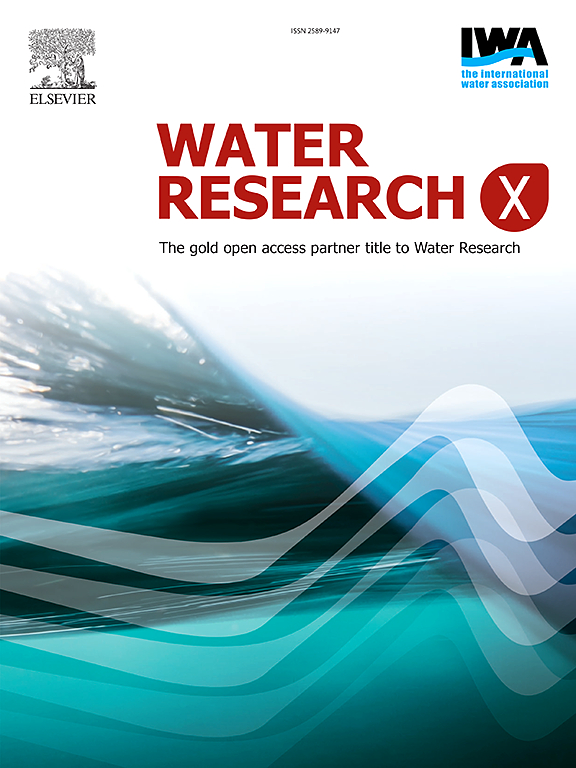Micropollutants removal, residual risk, and costs for quaternary treatments in the framework of the Urban Wastewater Treatment Directive
IF 8.2
2区 环境科学与生态学
Q1 ENGINEERING, ENVIRONMENTAL
引用次数: 0
Abstract
The revised Urban Wastewater Treatment Directive (UWWTD) imposes stringent regulations for the removal of micropollutants from urban wastewater treatment plants. The analyses conducted in this study are based on current knowledge extrapolated from literature WWTPs, to investigate the occurrence, removal and environmental risk related to the 12 target micropollutants: Amisulpride, Benzotriazole, 4,5-Methylbenzotriazole, Carbamazepine, Clarithromycin, Citalopram, Candesartan, Diclofenac, Hydrochlorothiazide, Irbesartan, Metoprolol, and Venlafaxine. The goal is to provide valuable insights into the challenges and opportunities associated with implementing quaternary treatment processes to comply with the UWWTD. Results indicate that the conventional biological treatment is insufficient, with median removal rates below 50 % for most target micropollutants (except for Benzotriazole and Irbesartan). The implementation of quaternary treatment processes, namely ozonation and activated carbon adsorption, significantly enhances WWTP micropollutants removal, with median removal efficiencies exceeding 80 % for all the target micropollutants, with Candesartan being the most recalcitrant. Environmental risk assessment reveals that some micropollutants pose a significant threat to aquatic ecosystems even with 80 % removal efficiency (Irbesartan, Candesartan, Diclofenac, and Venlafaxine), while others do not pose a risk even at WWTP influent concentrations (4,5-Methylbenzotriazole, Hydrochlorothiazide, Amisulpride, Citalopram, and Metoprolol).
Economic analysis shows that the selection of specific operating parameter values significantly impacts the cost of each treatment process, changing the economic feasibility ranking of the different treatment options.

城市废水处理指令框架内的微污染物去除、残留风险和四元处理成本
修订后的《城市污水处理指令》(UWWTD)对从城市污水处理厂去除微污染物制定了严格的规定。本研究基于文献WWTPs中推断的现有知识进行分析,以调查12种目标微污染物的发生、去除和环境风险相关:氨硫pride、苯并三唑、4,5-甲基苯并三唑、卡马西平、克拉霉素、西酞普兰、坎地沙坦、双氯芬酸、氢氯噻嗪、厄贝沙坦、美托洛尔和文拉法辛。目标是提供有价值的见解,了解与实施四元处理工艺相关的挑战和机遇,以符合UWWTD。结果表明,常规的生物处理是不够的,大多数目标微污染物(苯并三唑和厄贝沙坦除外)的中位去除率低于50%。采用臭氧氧化和活性炭吸附等四元处理工艺,显著提高了污水处理厂微污染物的去除效果,对所有目标微污染物的去除效率中值均超过80%,坎地沙坦最难去除。环境风险评估显示,一些微污染物即使去除效率达到80%也会对水生生态系统构成重大威胁(厄贝沙坦、坎地沙坦、双氯芬酸和文拉法辛),而其他微污染物即使在污水处理厂的流入浓度下也不会构成风险(4,5-甲基苯并三唑、氢氯噻嗪、氨硫pride、西酞普兰和美托洛尔)。经济分析表明,具体运行参数值的选择显著影响各处理工艺的成本,改变了不同处理方案的经济可行性排名。
本文章由计算机程序翻译,如有差异,请以英文原文为准。
求助全文
约1分钟内获得全文
求助全文
来源期刊

Water Research X
Environmental Science-Water Science and Technology
CiteScore
12.30
自引率
1.30%
发文量
19
期刊介绍:
Water Research X is a sister journal of Water Research, which follows a Gold Open Access model. It focuses on publishing concise, letter-style research papers, visionary perspectives and editorials, as well as mini-reviews on emerging topics. The Journal invites contributions from researchers worldwide on various aspects of the science and technology related to the human impact on the water cycle, water quality, and its global management.
 求助内容:
求助内容: 应助结果提醒方式:
应助结果提醒方式:


